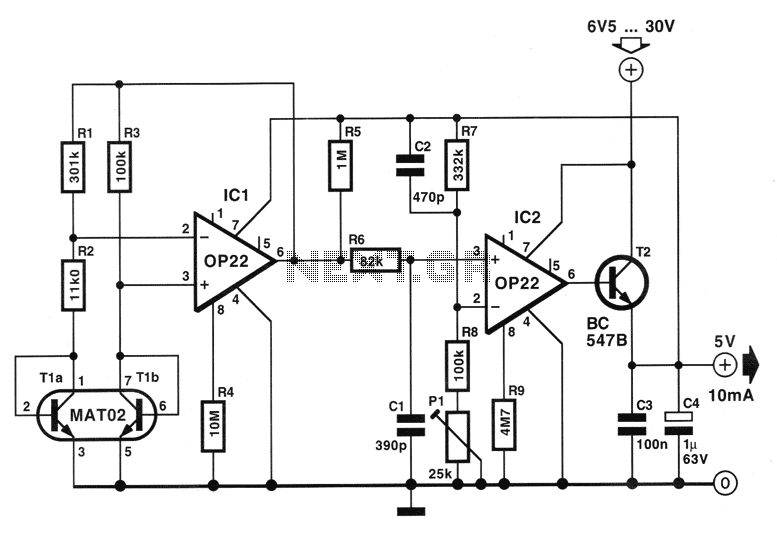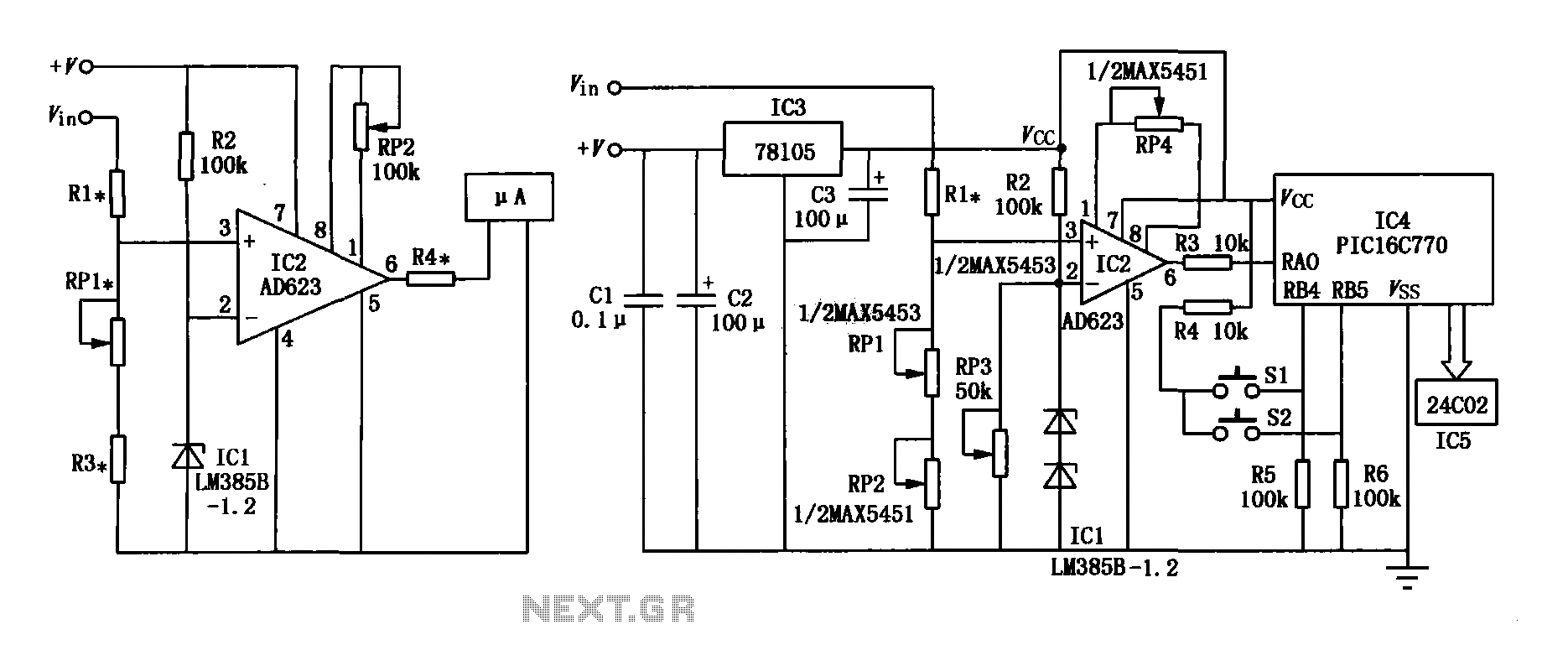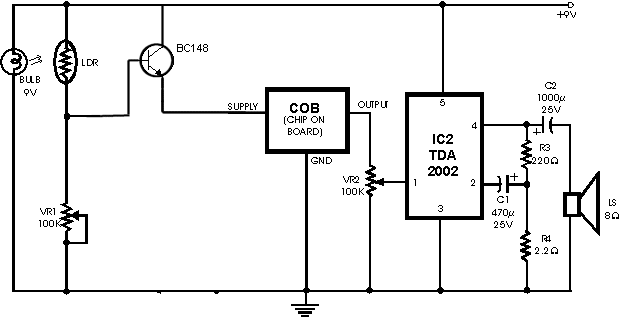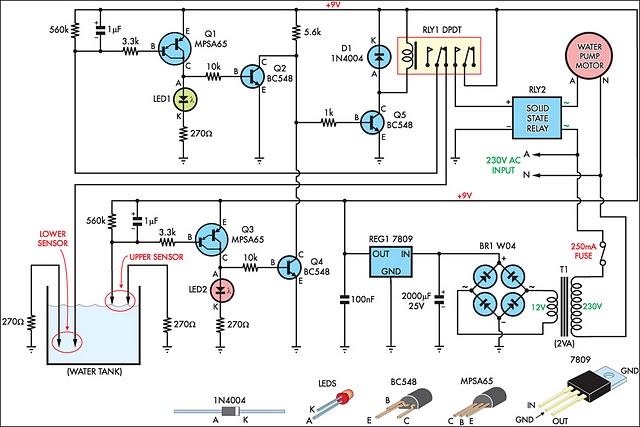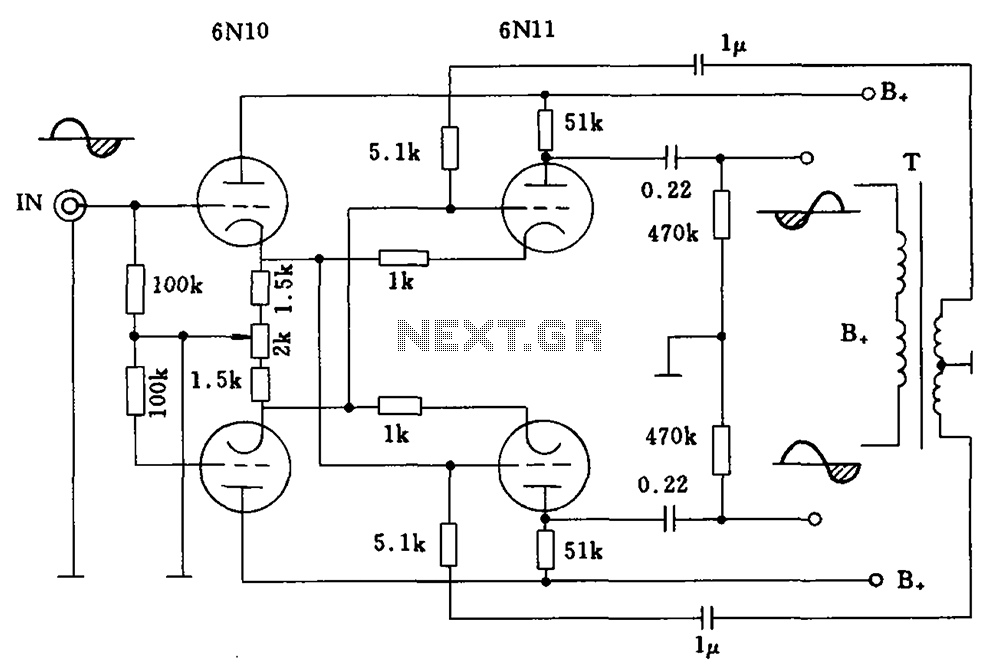
Variable DC Power Supply Circuit
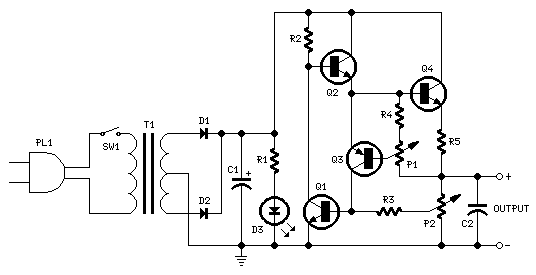
A Variable DC Power Supply is an essential tool for electronics hobbyists. This circuit is not entirely new, but it is simple, reliable, robust, and short-proof, offering variable voltage up to 24V and variable current limiting up to 2A. It is well-suited for powering various circuits as demonstrated on this website. Adaptations can be made to meet individual requirements as outlined in the accompanying notes.
The Variable DC Power Supply circuit typically utilizes a linear voltage regulator or a switching regulator to achieve the desired output voltage and current. The primary components include a transformer, rectifier, filter capacitor, adjustable voltage regulator, and current limiting resistor.
The transformer steps down the AC mains voltage to a lower AC voltage suitable for the application. The rectifier, often a bridge rectifier configuration, converts the AC voltage to pulsating DC. Following the rectification, a filter capacitor smooths the output voltage, reducing ripple and providing a more stable DC output.
The adjustable voltage regulator, such as the LM317 or a similar device, allows for the output voltage to be varied by using external resistors to set the desired voltage level. The current limiting feature can be implemented by adding a resistor in series with the load or by utilizing a current sensing circuit that adjusts the output voltage when the load current exceeds the specified limit.
The design should include adequate heat sinking for the voltage regulator to prevent overheating during operation, especially when operating at higher currents. Additionally, incorporating a digital voltmeter and ammeter can provide real-time monitoring of the output voltage and current, enhancing usability.
Overall, this Variable DC Power Supply design is adaptable, allowing hobbyists to modify it according to specific needs while ensuring safety and reliability in various electronic projects.A Variable DC Power Supply is one of the most useful tools on the electronics hobbyist`s workbench. This circuit is not an absolute novelty, but it`s simple, reliable, "rugged" and short-proof, featuring variable voltage up to 24V and variable current limiting up to 2A. It`s well suited to supply the circuits shown in this website. You can adapt i t to your own requirements as explained in the notes below. 🔗 External reference
The Variable DC Power Supply circuit typically utilizes a linear voltage regulator or a switching regulator to achieve the desired output voltage and current. The primary components include a transformer, rectifier, filter capacitor, adjustable voltage regulator, and current limiting resistor.
The transformer steps down the AC mains voltage to a lower AC voltage suitable for the application. The rectifier, often a bridge rectifier configuration, converts the AC voltage to pulsating DC. Following the rectification, a filter capacitor smooths the output voltage, reducing ripple and providing a more stable DC output.
The adjustable voltage regulator, such as the LM317 or a similar device, allows for the output voltage to be varied by using external resistors to set the desired voltage level. The current limiting feature can be implemented by adding a resistor in series with the load or by utilizing a current sensing circuit that adjusts the output voltage when the load current exceeds the specified limit.
The design should include adequate heat sinking for the voltage regulator to prevent overheating during operation, especially when operating at higher currents. Additionally, incorporating a digital voltmeter and ammeter can provide real-time monitoring of the output voltage and current, enhancing usability.
Overall, this Variable DC Power Supply design is adaptable, allowing hobbyists to modify it according to specific needs while ensuring safety and reliability in various electronic projects.A Variable DC Power Supply is one of the most useful tools on the electronics hobbyist`s workbench. This circuit is not an absolute novelty, but it`s simple, reliable, "rugged" and short-proof, featuring variable voltage up to 24V and variable current limiting up to 2A. It`s well suited to supply the circuits shown in this website. You can adapt i t to your own requirements as explained in the notes below. 🔗 External reference
